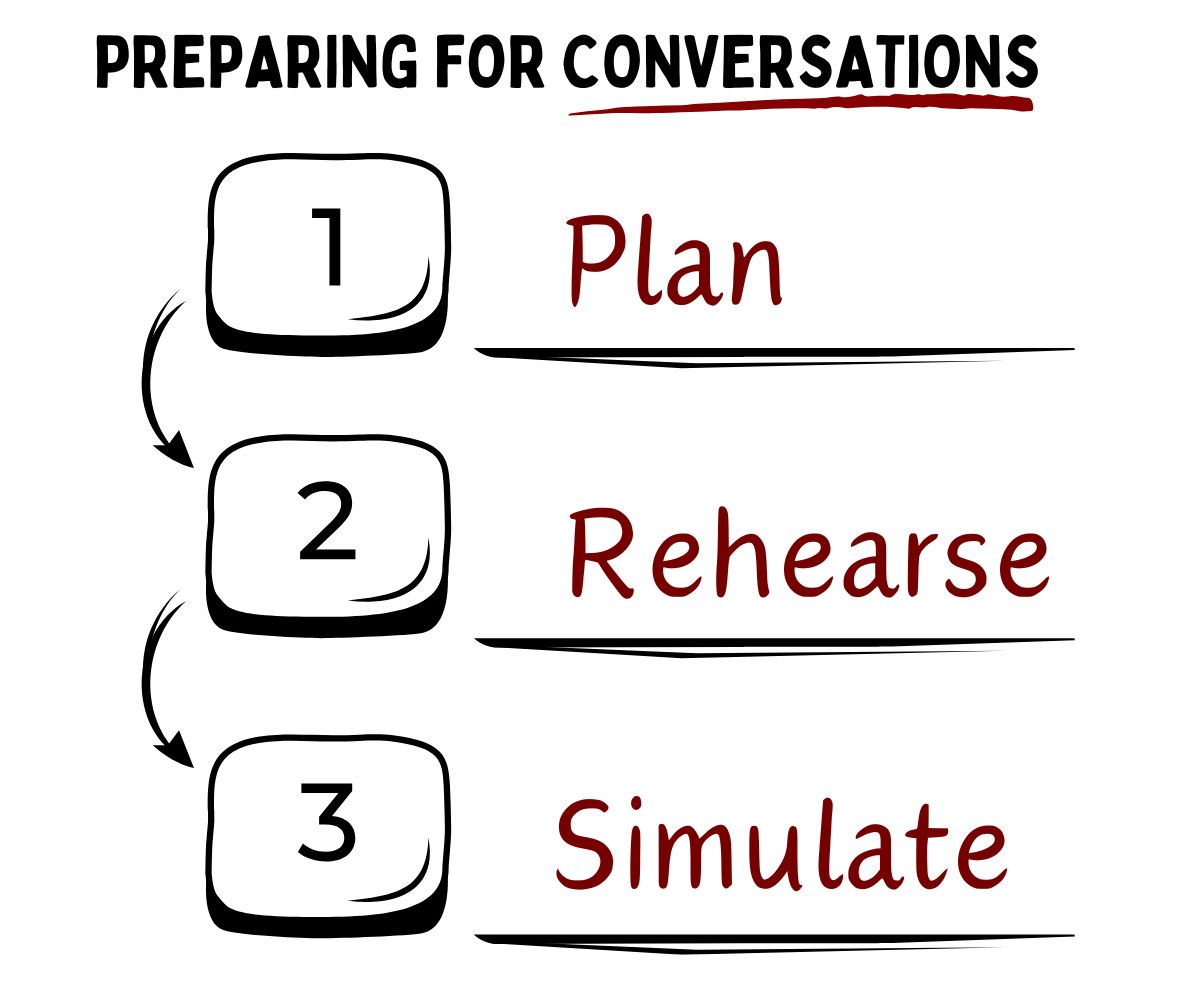Mastering High-Impact Conversations
Preparing for conversations like a chess player.
Six months into my role as an Engineering Manager, I found myself fumbling in a one-on-one. I was rambling, trying to string together vague and unstructured ideas. The other person had checked out a while ago, nodding politely, and by the end, we were both relieved when time ran out.
This was the second time I found myself in this awkward position. It always started the same way: some small talk, then jumping straight into the main topic, and then... random words. No depth, no direction, and no outcome.
If you have found yourself in a similar situation, you probably made the same mistake I made.
The Turning Point
While reflecting on those shallow conversations, I remembered something I learned years ago while playing chess: “Think three moves ahead.”
In chess, you don’t just show up to a game and hope for the best. You train yourself. You plan, rehearse and simulate before every game.
I decided to apply this to my conversations.
Three Levels of Preparation
The framework I use revolves around three levels of preparation. Most people stop at Level 1, but the true mastery comes at Level 3. Whether you’re having feedback sessions, performance reviews, or discussing goal-setting, here’s how to prepare better.
Level 1: Plan The Points
The simplest level of preparation is just making a list of things to talk about. Write down bullet points for each topic:
Project statusVacation plansFeedback on yesterday’s announcement
I keep a running list for each person I meet with regularly, organized under a “Next” header in a shared document. When it’s time for our one-on-one, I update the header with the meeting date and dive in.
Benefits:
Efficiency: Ensures you cover all key topics.
Organized: You stay organized, clearing your mind before the meeting.
Quick Setup: Minimal effort, making it easy to do for back-to-back meetings.
Limitations:
Lack of Depth: Works for straightforward conversations but not so much for complex discussions.
Unstructured Delivery: You might know what to talk about, but not how to say it, leading to unclear or incomplete communication
Limited Impact: Conversations might remain surface-level without pushing for meaningful outcomes.
Level 2: Rehearse The Message
Think through how you would say things instead of just bullet points.
For example, instead of vaguely saying, “That announcement could’ve been better,” I began preparing specific feedback:
“Hey, the announcement you sent yesterday missed some critical details, like the timeline and expectations. A few stakeholders were confused. What do you think about an internal review before sending an org-wide message next time?”
Using feedback frameworks like SBI (Situation, Behavior, Impact) help with creating an effective structure to the message.
Benefits:
Improved Clarity: Practicing what you’re going to say helps refine your message.
Prepared for Specifics: You think through the specifics, making the conversation more actionable.
Increased Confidence: Knowing exactly how you’ll deliver the message boosts your confidence going into the meeting.
Limitations:
One-Dimensional: Even if your message is clear, you may not be ready for unexpected reactions.
Scripted Feel: Rehearsing too much can make your message sound rigid or unnatural.
Time Commitment: Crafting and rehearsing every conversation point can be time-consuming.
Level 3: Simulate The Conversation
In chess, you don’t just make your move and hope for the best—you anticipate what your opponent might do next and plan accordingly. I applied the same idea to my conversations.
Before a meeting, I started simulating how the other person might respond. If I gave feedback, would they agree? Would they disagree? Would they offer an alternative solution? By thinking through different scenarios, I could map out several directions the conversation might take.
I didn’t write down every possible response, but I had talking points ready for multiple outcomes.
Benefits:
Adaptability: You’re prepared for a range of responses, making you more flexible and less likely to be caught off guard.
Deep Engagement: This level of preparation leads to more thoughtful and meaningful conversations.
Problem Solving: Anticipating objections helps you address them on the spot without stalling the conversation.
Limitations:
Time Intensive: Simulating multiple outcomes takes time and mental energy, which might not be feasible for every conversation.
Cognitive Overload: Trying to prepare for every possible response can be overwhelming.
Unpredictability: Even with simulation, there will always be unexpected twists.
Pause Before You Respond
Even with all this preparation, you can’t anticipate everything. That’s where another lesson from chess comes in—pause before you move.
In fast-paced chess (blitz), players rush to respond, but that often leads to mistakes. Similarly, in conversations, taking a moment to pause before replying gives you time to collect your thoughts. A right response is better than a quick response.
And if you don’t have the answer yet, it’s okay to say, “Let me think about that and get back to you.”
Conclusion
Conversations, like chess, are strategic. The more you plan, rehearse, and simulate, the better you’ll become at guiding them to meaningful outcomes. By using this three-level preparation method, I turned my one-on-ones from awkward and aimless to engaging and productive.
Ready to upgrade your conversations?
More Resources
Gourav Khanijoe has this crisp and actionable series of short posts called “Win That Communication” that you’ll find useful.


